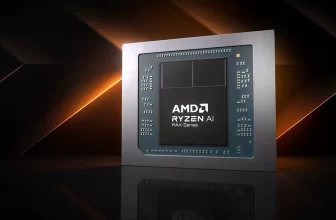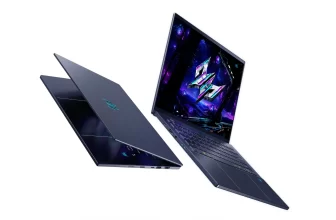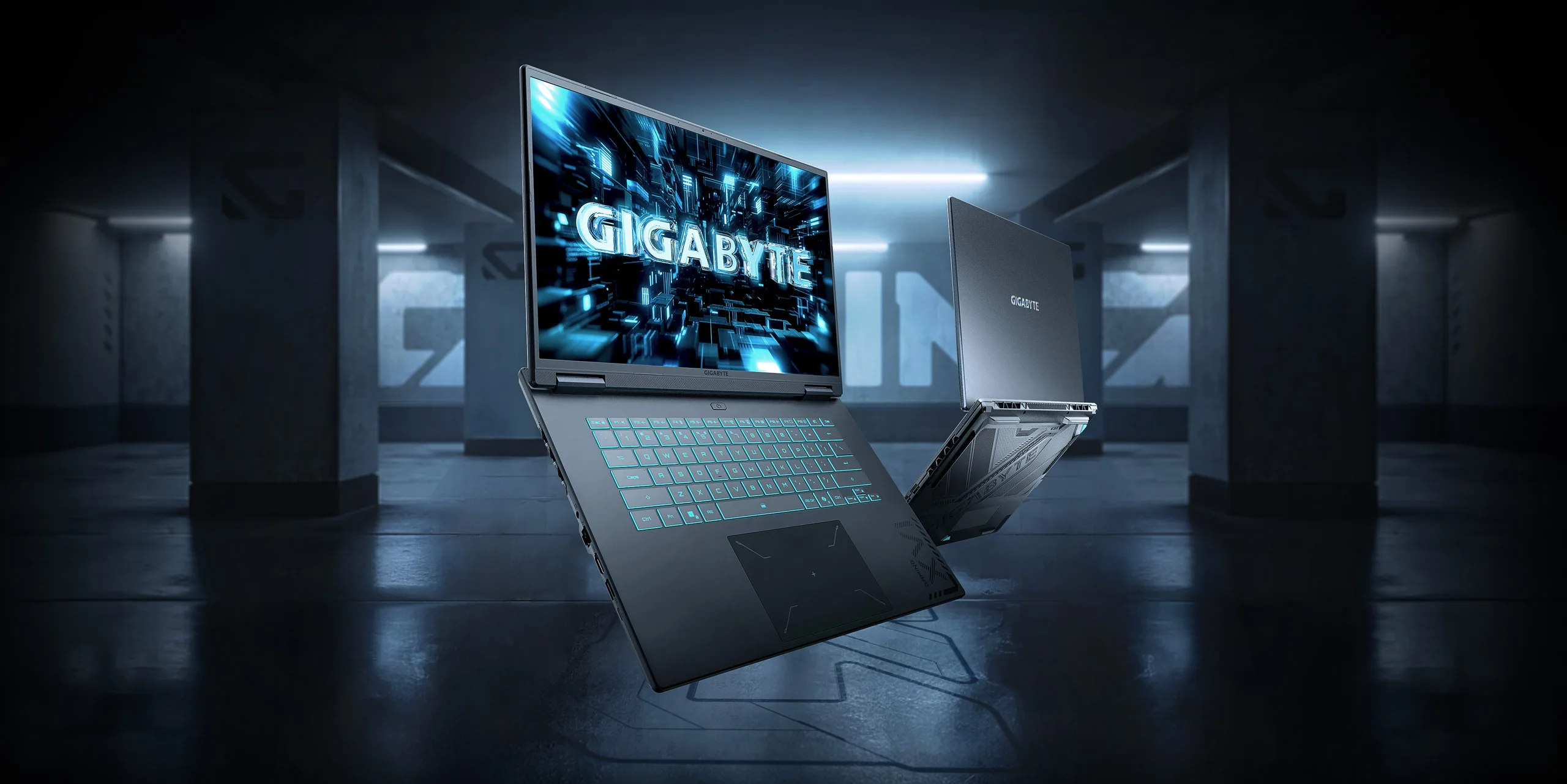
Gigabyte has officially launched its Gaming A16 PRO and Gaming A18 laptops, expanding the company’s 2025 Gaming Series lineup with systems that pair Nvidia’s latest RTX 50-series graphics cards but uses rebranded CPUs from previous generations. The Intel variants go all the way up to the RTX 5080 Laptop GPU, though the choice of CPU architecture may raise some questions among gamers expecting entirely new hardware.
Graphics and Performance Positioning
Both laptops feature Nvidia’s Blackwell-based RTX 50-series laptop GPUs, which offer decent performance improvements in ray tracing performance, and particularly due to DLSS 4 with Multi Frame-Gen technology that can multiply frame rates up to 8x.
Gaming A16 PRO
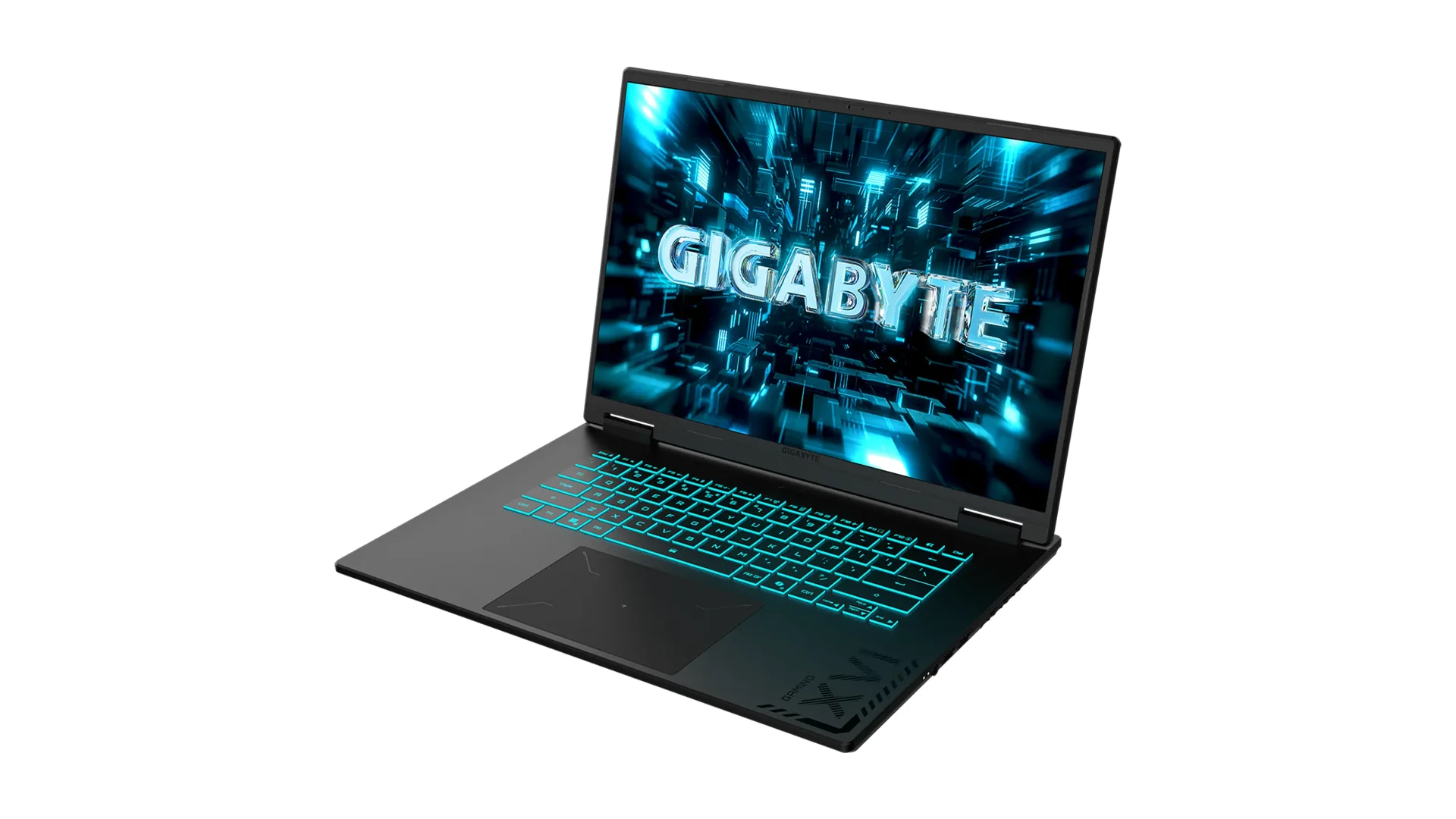
The Gaming A16 PRO offers two high-end configurations: one with the GeForce RTX 5070 Ti and another with the RTX 5080 Laptop GPU. Both variants come with 32 GB of non-upgradeable LPDDR5x-5600 memory. The A16 PRO’s RTX 5080 can go up to 115W total graphics power (TGP), which is respectable for a laptop under 20mm thin, but falls short of the maximum 175W available in larger gaming laptops.
Gaming A18
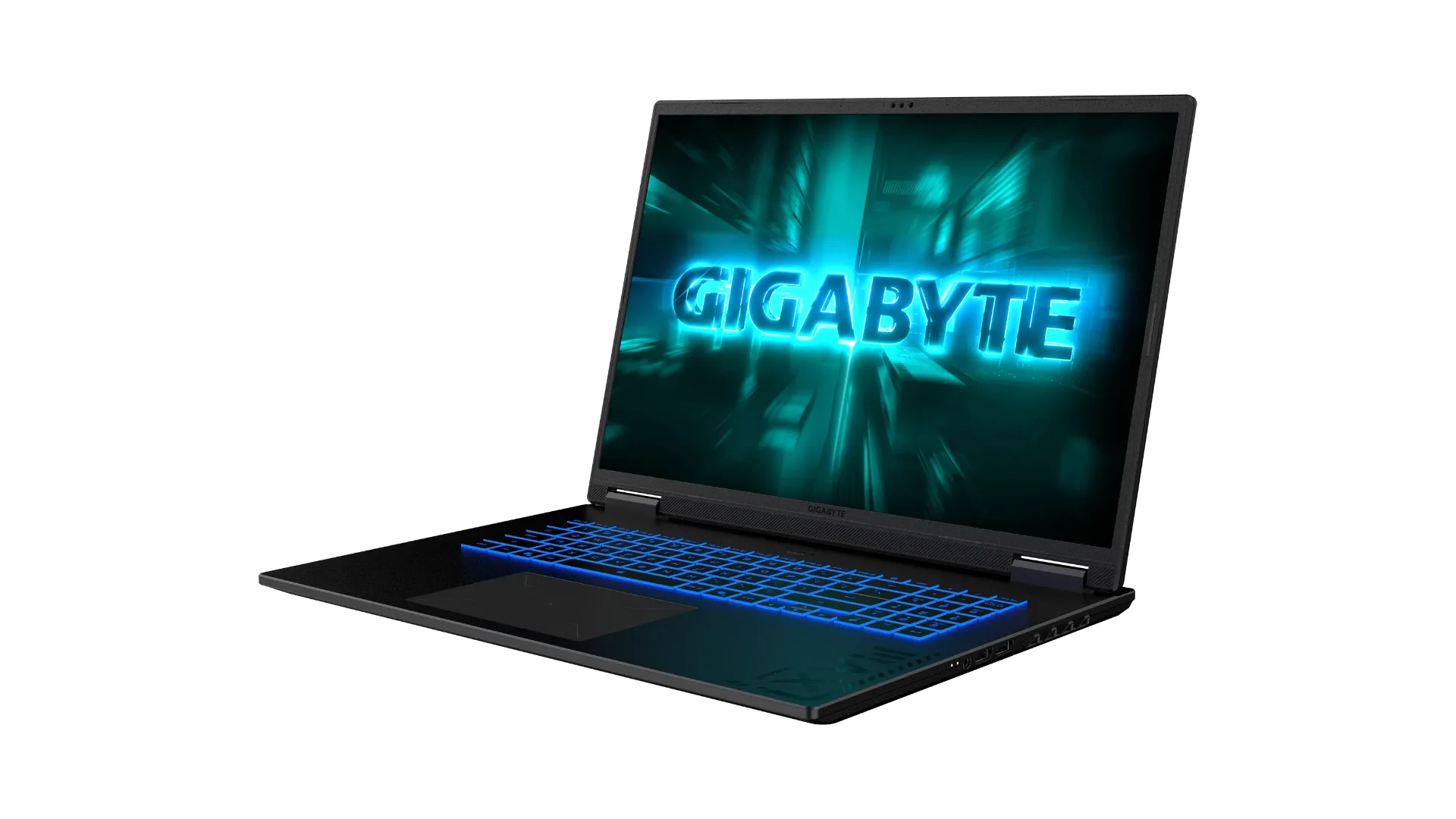
The Gaming A18 instead offers configurations with AMD’s Ryzen 7 260 processor paired with up to an RTX 5070 GPU at 85W TGP. It supports up to 64 GB of user-upgradeable DDR5 memory via dual SO-DIMM slots, making it more flexible for future upgrades. The choice to cap the A18 at RTX 5070 is interesting, as 18-inch laptops typically accommodate more powerful graphics solutions.
Specifications
| Specification | Gaming A16 PRO | Gaming A18 |
|---|---|---|
| Processor | Intel Core 7 240H (10 cores, 16 threads, up to 5.2 GHz) Raptor Lake architecture | AMD Ryzen 7 260 (8 cores, 16 threads, up to 5.1 GHz) Zen 4 (Hawk Point) architecture |
| Graphics | Up to Nvidia GeForce RTX 5080 Laptop GPU 16GB GDDR7 VRAM 115W Max TGP | Up to Nvidia GeForce RTX 5070 Laptop GPU 8GB GDDR7 VRAM 85W Max TGP |
| Memory | 32GB LPDDR5x-5600 (Non-upgradeable) | Up to 64GB DDR5 (2× SO-DIMM slots, user-upgradeable) |
| Storage | Up to 4TB PCIe 4.0 NVMe SSD Dual M.2 slots (1× Gen4x4, 1× Gen4x2) | Up to 4TB PCIe 4.0 NVMe SSD Dual M.2 slots (1× Gen4x4, 1× Gen4x2) |
| Display | 16-inch IPS 2560×1600 (WQXGA) 165Hz refresh rate 3ms response time 16:10 aspect ratio 100% sRGB, 400 nits | 18-inch IPS 2560×1600 (WQXGA) 165Hz refresh rate 3ms response time 16:10 aspect ratio |
| Cooling System | WINDFORCE Infinity EX Frost Fan (158 asymmetric blades) Dual-fan design | Surround-vent cooling Dual-fan design 3D VortX air-channeling |
| Battery | 76Wh Li-Polymer Type-C PD 3.0 fast charging 12+ hours claimed battery life | 76Wh Li-Polymer Type-C PD 3.0 fast charging 12+ hours claimed battery life |
| Dimensions | Under 20mm thickness 358.3 × 262.5 mm | 20mm thickness Larger chassis (exact dimensions not specified) |
| Weight | 2.3 kg (5.07 lbs) | 2.8 kg (6.17 lbs) |
| Keyboard | Golden Curve Keyboard 1.7mm key travel Larger keycaps | Golden Curve Keyboard 1.7mm key travel Larger keycaps |
| Audio | Dolby Atmos Stereo speakers | Dolby Atmos Stereo speakers |
| Connectivity | Wi-Fi 6E Bluetooth 2× USB Type-A 2× Thunderbolt 4 USB-C HDMI 2.1 3.5mm audio jack RJ-45 Ethernet | Wi-Fi 6E Bluetooth USB Type-A and Type-C ports HDMI 2.1 3.5mm audio jack RJ-45 Ethernet |
| Special Features | GiMATE AI Assistant (Press and Speak) MUX Switch 180° lay-flat hinge NVIDIA DLSS 4 NVIDIA Studio NVIDIA NIM microservices | GiMATE AI Assistant (Press and Speak) MUX Switch 180° lay-flat hinge NVIDIA DLSS 4 NVIDIA Studio NVIDIA NIM microservices |
| Operating System | Windows 11 Home | Windows 11 Home |
| Pricing | Not yet announced (Estimated $2,000-$3,000+ based on RTX 5080 configuration) | Not yet announced (Estimated $1,500-$2,000 based on RTX 5070 configuration) |
It’s somewhat odd that the Intel laptops are positioned as high-end alternatives and AMD variants get more humble specs, given that AMD CPUs have been more popular among gamers for some time.
But a more notable aspect of this launch is that both laptops utilize rebranded versions of older CPU architectures rather than the latest silicon. The Gaming A16 PRO features Intel’s Core 7 240H, which is derived from the Raptor Lake architecture originally introduced in 2022. Similarly, the Gaming A18 uses AMD’s Ryzen 7 260, which reuses Hawk Point silicon based on the Zen 4 architecture.
Intel’s Core 200H series is part of the Raptor Lake Refresh that was announced in late 2024. The Core 7 240H offers 10 cores (6 performance cores and 4 efficiency cores) with boost speeds up to 5.2 GHz. According to benchmark results, it performs similarly to the Core i7-13620H from the 13th generation, with slightly higher clock speeds and support for DDR5-5600 memory.
AMD’s Ryzen 7 260 is part of the company’s Ryzen 200 series refresh, essentially a rebadged Ryzen 7 8845HS. It features 8 Zen 4 cores with 16 threads, clocked up to 5.1 GHz, and includes the Radeon 780M integrated graphics. Notably, some reports suggest these Ryzen 200 chips may have their NPU (Neural Processing Unit) disabled, which could be a consideration for users interested in on-device AI acceleration.
Design and Features
The Gaming A16 PRO measures under 20mm thick and weighs 2.3 kg, positioning it in the thin-and-light gaming laptop category. It features Gigabyte’s WINDFORCE Infinity EX cooling system with a Frost Fan design incorporating 158 asymmetric blades, engineered to maintain thermal performance while keeping the chassis compact. The laptop includes a 180-degree lay-flat hinge for versatile usage scenarios.
The larger Gaming A18 measures 20mm thick and weighs approximately 2.8 kg, utilizing a surround-vent cooling design intended to provide stable thermal performance during extended gaming or content creation sessions. The 18-inch form factor offers more screen real estate, targeting users who prioritize display size for productivity alongside gaming.
Both models feature WQXGA (2560×1600) 165Hz displays with 3ms response time and 16:10 aspect ratio. They include 76Wh batteries with Type-C Power Delivery 3.0 fast charging support, with Gigabyte claiming over 12 hours of battery life under mixed usage scenarios.
Additionally, both laptops include MUX switches, allowing users to toggle between integrated and dedicated graphics modes to optimize either frame rates or battery life. They also support Nvidia’s full suite of technologies including DLSS 4, Nvidia Studio, and Nvidia NIM microservices for AI-accelerated workflows.
Market Positioning and Competitors
These laptops enter a competitive segment dominated by established gaming brands. The Gaming A16 PRO will compete directly against models like the Asus ROG Strix G16, MSI Stealth series, and HP Omen Max 16, all of which offer RTX 5080 configurations. The A18’s positioning is less conventional, as most 18-inch gaming laptops typically feature more powerful graphics solutions than an RTX 5070.
Gigabyte’s strategy appears focused on providing competitive pricing through the use of rebranded processors. The Core 7 240H and Ryzen 7 260 likely cost less than Intel’s Core Ultra 200H Arrow Lake or AMD’s Ryzen AI 300 Strix Point processors, potentially allowing Gigabyte to offer attractive price points when these laptops reach retail.
Gigabyte has yet to announce specific pricing or regional availability details for either laptop. Based on typical pricing for RTX 5080 laptops, which range from $2,600 to over $3,000, and RTX 5070 systems starting around $1,299, these Gigabyte models would need competitive pricing to differentiate themselves given the old CPUs.



